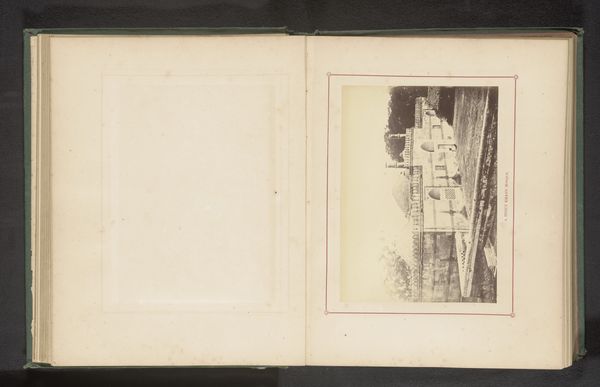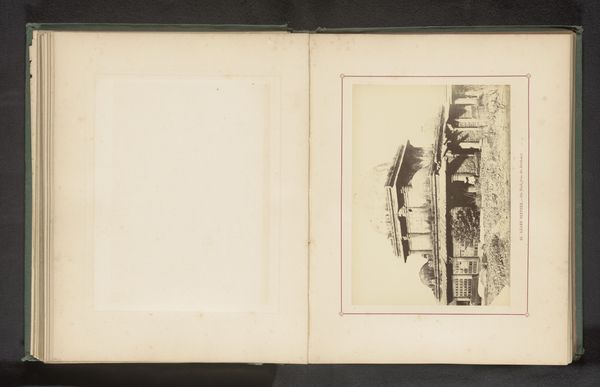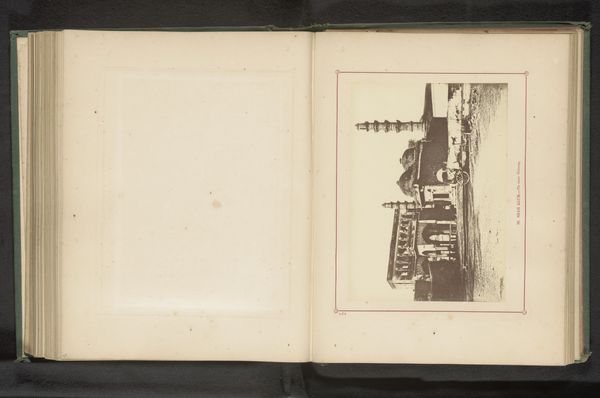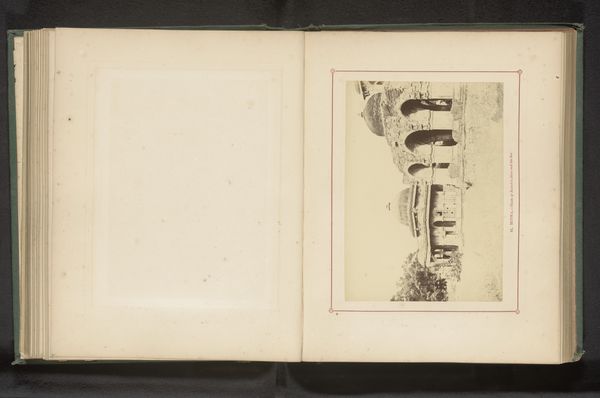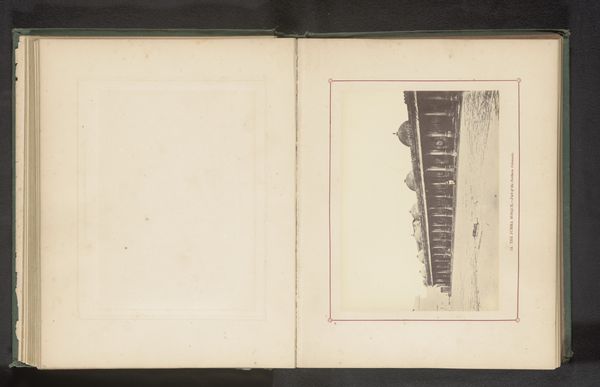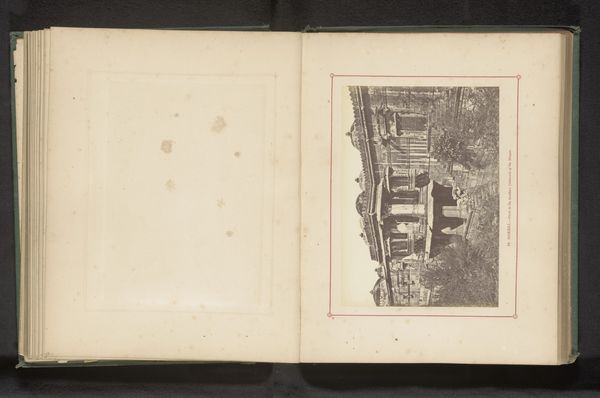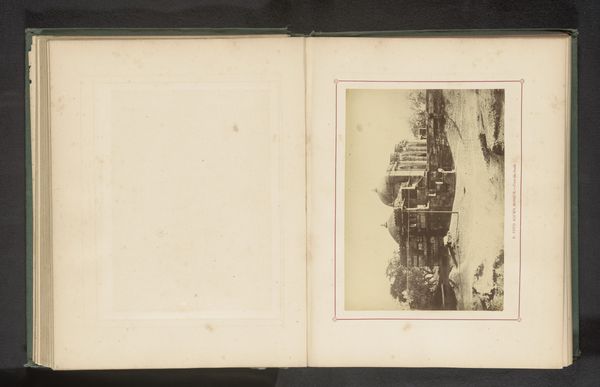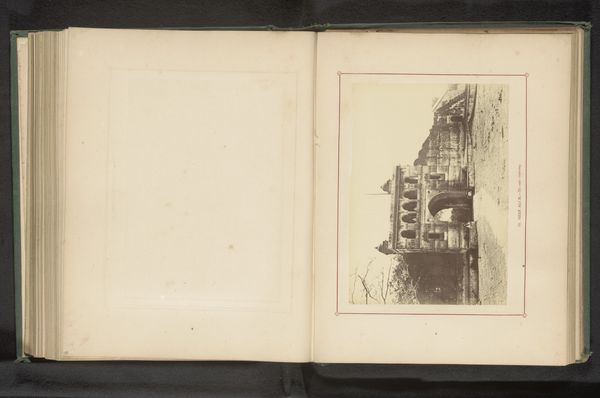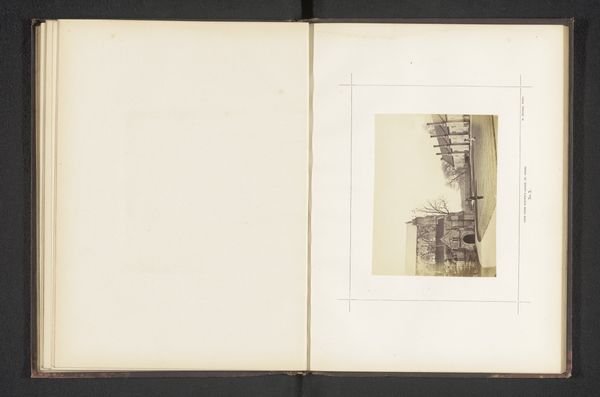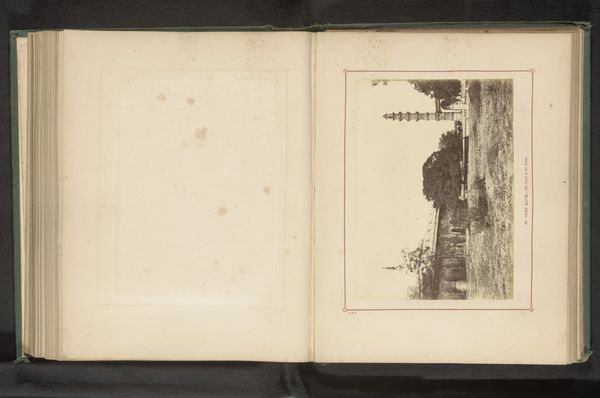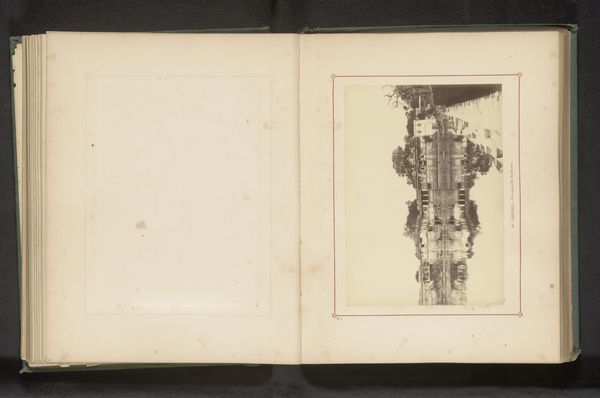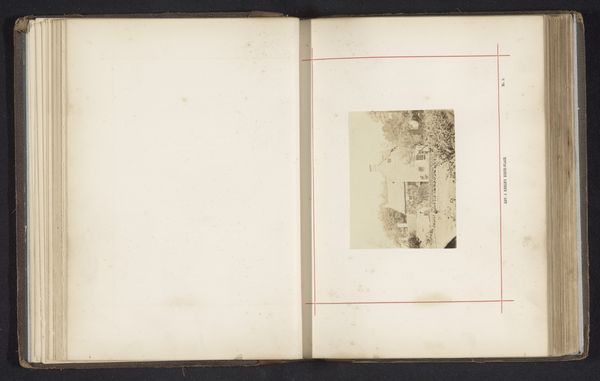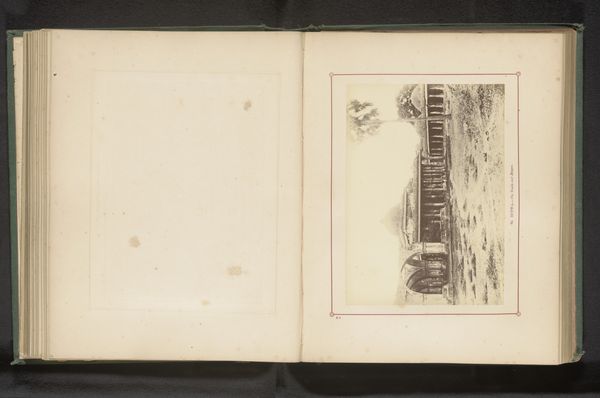
print, photography, albumen-print
# print
#
landscape
#
photography
#
islamic-art
#
albumen-print
Dimensions: height 136 mm, width 184 mm
Copyright: Rijks Museum: Open Domain
Editor: Here we have a photograph titled "Gezicht op de Ahmed Shah's-moskee in Ahmedabad" by Thomas Biggs, dating from before 1866. It appears to be an albumen print displayed in an open book. The mosque is beautiful, but there is also something about it that makes me question what is happening with it. How do you interpret this work? Curator: This albumen print gives us a glimpse into the intersection of British colonialism and the representation of Islamic architecture in India. Biggs, likely working within the colonial administration, captured the Ahmed Shah's Mosque. It’s vital to consider whose gaze is framing this image and for what purpose. How might the very act of photographing the mosque have been tied to asserting colonial power through visual documentation and control? Editor: So it's not just a picture of a pretty building. Curator: Precisely. The serene aesthetic obscures a more complex narrative. The print likely circulated within a colonial context, shaping perceptions of Indian culture and architecture for a European audience. Do you see how the framing itself presents the mosque as an object of study? The unpopulated scene further emphasizes the photographer’s detached perspective, hinting at colonial authority. Editor: I hadn't thought about that, but it makes sense. By removing the people from the scene, it subtly removes the cultural context, right? It's about control. Curator: Exactly. Understanding this piece demands that we interrogate its role in perpetuating colonial ideologies through photography, questioning the supposed objectivity of visual representation. Editor: I see the photograph with entirely new eyes now. Thank you for sharing your expertise. Curator: It was my pleasure, analyzing art helps us better understand its historical place.
Comments
No comments
Be the first to comment and join the conversation on the ultimate creative platform.
